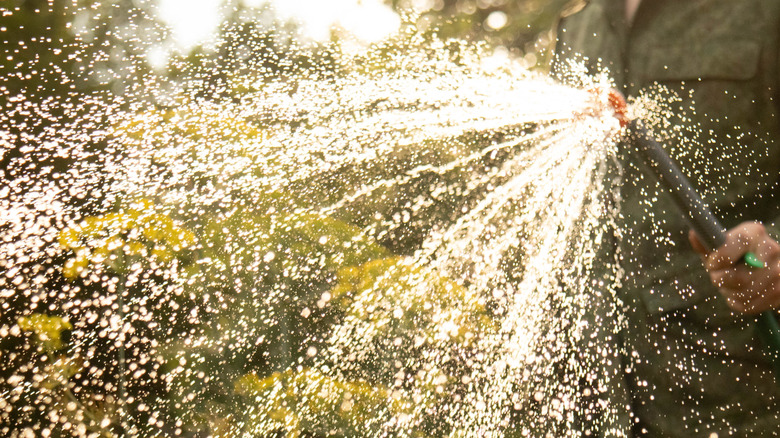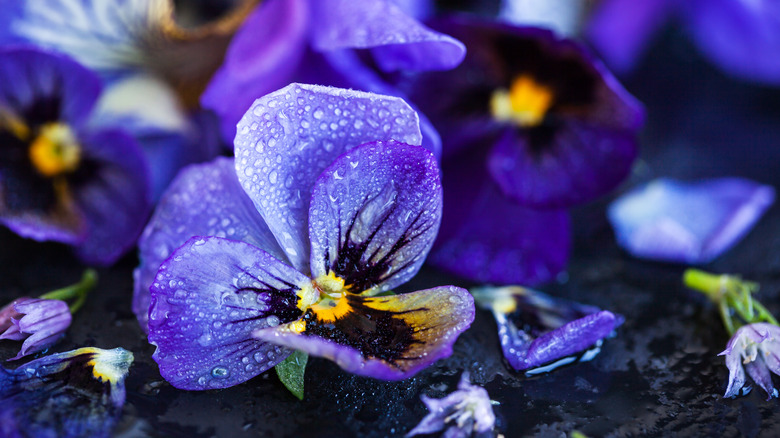The Delicate Flower You Should Never Water With A Hose
A garden full of flowers straining towards the sunlight is a harbinger of summer, a signal of the end of winter's short days. There's one variety of early spring bloomers with colorful petals forming what seem to be happy faces, reward gardeners by setting the scene for the later bloomers. The French named this popular spring flower after the word "pensee," meaning "thought," because they appeared to be pondering something.
These viola hybrids, now called pansies (Viola x wittrockiana), have delicate petals that can suffer harm when a forceful stream of water hits them. They are easy-to-grow perennials and one of the most popular cool weather bedding plants, which unfurl in shades of blue, violet, white, red, and orange for up to six months. Pansies, hardy in USDA Hardiness zones 6 to 10, thrive in well-drained, moist but not soggy soil. They need 1 to 2 inches of water a week, ideally delivered by soaker hoses or a drip irrigation system rather than an overhead method such as a hose or watering can. In addition to damaging the petals, overhead watering can lead to anthracnose, a fungal disease that causes leaf browning. Overwatering in general causes root rot and crown rot, but you should also never let pansies dry out.
Instead, experts recommend using soaker hoses, lengths of porous hose that are attached to an outdoor water spigot. They're laid on the ground next to rows of plants or snaked through an irregular garden bed. The hoses deliver a steady, but gentle, flow of irrigation to plant roots and can be connected to a timer with a rain sensor. Installing soaker hoses has additional benefits for your home beyond simplifying your garden tasks.
Helping these fragile flowers thrive
Pansies have fine, delicate roots so they need nutrient-rich, porous soil. Work organic material like compost, hummus, or peat moss, into the top 3 or 4 inches of the garden. This not only nurtures the soil, it aids in water retention. Have your soil tested by your local extension office or do it yourself with a home test kit to see if you need to add fertilizer. If you do, use a commercial fertilizer with a formula that addresses the deficiencies. Usually a 5-10-5 fertilizer is right for pansies.
Pansies can be grown from seed or planted as seedlings in sunny areas with some afternoon shade. They do best in the cooler weather in the spring and fall—in the summer they get leggy and have fewer flowers. If you're loath to just let them die, or to dig them up and replace them with other flowers, you can cut them back and cover them with mulch until the weather cools. Conversely, since pansies are such short-lived perennials, they're frequently treated as annuals, particularly in the cooler zones. Mulching them over the winter helps them survive to bloom again in the spring.
The foliage of pansy plants is unremarkable, growing to at most nine inches tall. The blooms are the stars of the show. Deadhead them as they die to promote more flowers. Enjoy them indoors by floating the blooms in a bowl of water as a centerpiece, or use the edible flowers in salads or baking.

